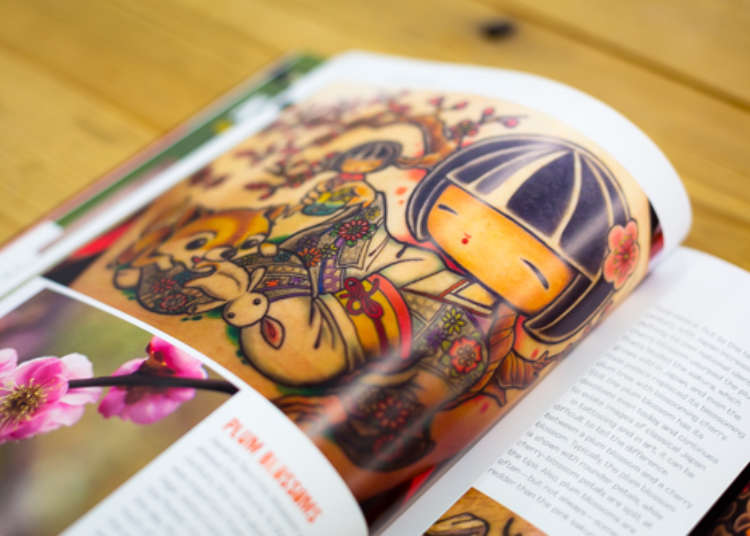
Japan and tattoos have a long and turbulent history, as the art of painting on a human canvas didn’t always have the same connotation that it does today.
The earliest mention of Japanese tattooing dates back to around the third century, found in the Chinese text, Wei Chih. During these times, tattoos were mainly seen as a mark that belonged to a social class, for religious purposes, and even fishers to receive protection from creatures while at sea.
- Table of Contents
-
- A form of punishment
- Traditional but Frowned Upon
- History Culture Design
- Chapters 1 and 2: Kanji and Nature Tattoos
- Chapter 3: Creatures Living and Mythical
- Chapter 4: Gods and Guardians, Heroes and Demons
- Chapter 5: The Full Bodysuit
- Chapter 6: Contemporary Designs and Geek Tattoos
- A Tattoo Book for Everyone
- Related Articles
A form of punishment
However, around the middle of the Kofun period (300 to 600 CE), people’s perceptions of tattoos began to take a negative turn. Tattoos began to be used as a form of punishment for criminals. Depending on the area of Japan, a tattoo would be put on the forehead or arm of a criminal to distinguish them from the rest of society.
Traditional but Frowned Upon

Nowadays, people still associate irezumi (traditional Japanese tattooing) with crime, and many places, such as public baths, hot springs, and some fitness clubs, prohibit those with tattoos from entering. However, tattoos are becoming increasingly fashionable among young Japanese, who have their own preferences to tattoos, be they Western or Japanese. Although it might seem far off, perceptions of tattoos are slowly beginning to change, and someday they may be entirely accepted.
To get a better understanding of Japanese tattoos, we recently had an opportunity to review “Japanese Tattoos,” a book by Brian Ashcraft and Hori Benny.
History Culture Design

In Japanese Tattoos, Ashcraft and Benny explore the long-standing, yet still taboo subject of tattoos in Japan. The new book, released in July 2016, sheds light on the tradition that is both revered and hidden within Japanese society. From their ancient origins to their place in modern-day Japan, the book provides a thorough look at one of the country’s most hidden art forms, with detailed explanations of terminology and history, and an array of stunning full-color photos dispersed throughout its 158 pages.
Each chapter takes on a different type of tattoo, from Shinto deities to contemporary pop-culture-inspired designs. Throughout the book are profiles of notable tattooists and clients, including exclusive interviews that provide rare insights into the world of irezumi and Japanese tattoo culture as a whole.
Chapters 1 and 2: Kanji and Nature Tattoos
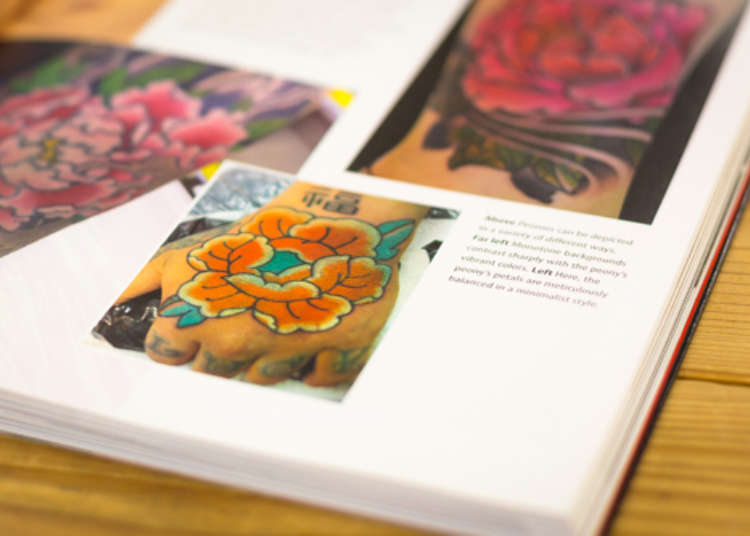
For many westerners, when hearing the words “Japanese Tattoo,” the image of kanji and other Japanese characters immediately come to mind. This chapter introduces us to the origins of Japanese script tattoos. Considering their stigma in current-day Japan, it may come as a surprise to learn that tattoos did not always carry negative connotations, and were once used as a way to denote social status, or even to serve as a type of protection charm. Further in the chapter is a list of tips to follow for those looking to receive a proper kanji tattoo, including a list of popular Japanese mantras and mottos. This is a must-read for anyone considering a Japanese language tattoo, especially for those who would rather avoid getting permanently inked in a cliché, an inadequate translation, or worst of all, a character that is miswritten!
Chapter 2 talks about one of the most popular types of tattoos you can find across the globe. As with the kimono, the motifs of Japanese nature tattoos are heavily influenced by the changes that occur during the country’s four distinct seasons, as well as other elements of traditional culture such as ikebana (flower arrangement) and Buddhism. An explanation of irezumi pigments is also provided, giving a deeper understanding of the color choices involved.
Chapter 3: Creatures Living and Mythical
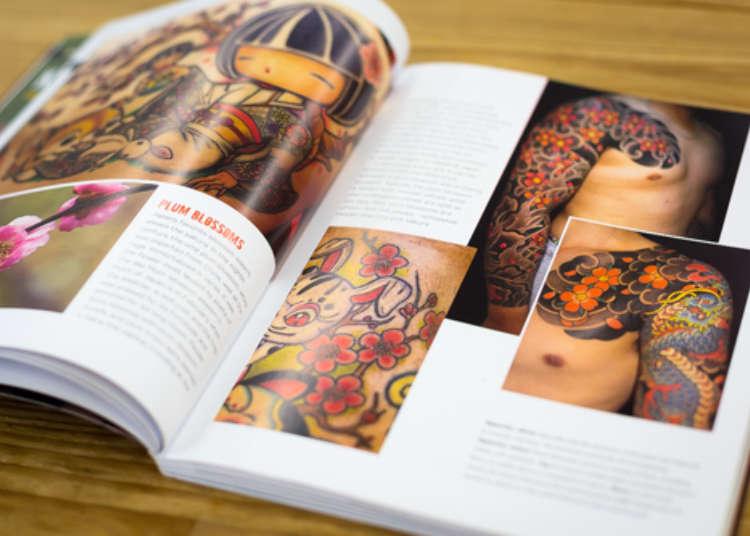
For those who would prefer to leave reality behind and cover their bodies in something from a fantasy realm, there are more than a few amazing images of dragons, kitsune, phoenixes, and other creatures of myth. As with the rest of the book, the minute detail will give you the answers to questions you would have never thought to ask, such as how to tell a Japanese dragon from a Chinese one, or why carp are considered among the most masculine of tattoos.
Chapter 4: Gods and Guardians, Heroes and Demons
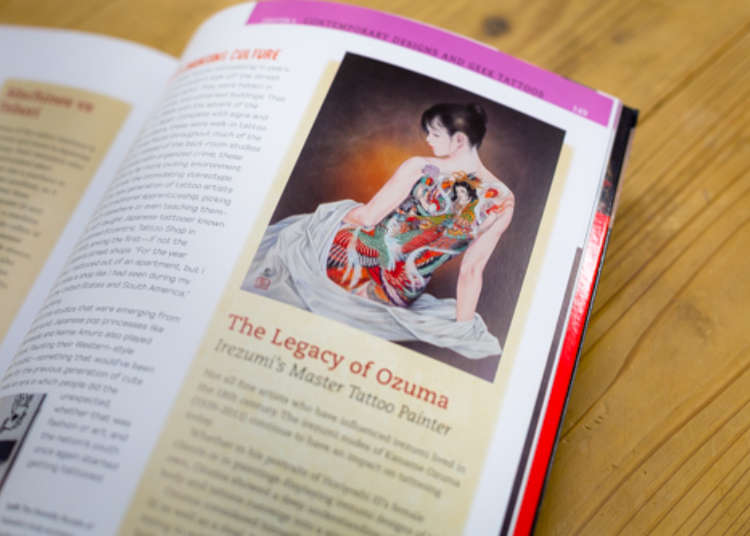
A fascinating chapter for Japanese folklore buffs, showing a collection of what are arguably some of the most striking tattoos in the book. Elaborate depictions of deities and demons from Buddhist and Shinto religious lore can be seen on these pages. It is also here that you’ll find one of the most unusual tattoo client profiles featured in the book: One woman working as a childbirth health care professional spent over two years getting a secret irezumi backpiece of a goddess of easy childbirth, along with other elements representing fertility, and protection. While the discovery of the tattoo itself may put her job in jeopardy, she did it out of a deep commitment to her patients’ well-being. It is stories like this that make Japanese Tattoos more than an art book, or a mere reference book.
Chapter 5: The Full Bodysuit
A showcase of the quintessential Japanese tattoo: the full irezumi bodysuit. In addition to several stunning photographs, this chapter offers an in-depth explanation of the various types of bodysuits, as well as an exploration of their roots in Japan’s Edo period working class, particularly among firefighters. For many interested in Japanese tattoos, this is what you’ve been waiting for.
Chapter 6: Contemporary Designs and Geek Tattoos
No book on Japanese tattoos could be considered complete without a nod to the designs inspired by the country’s modern pop culture which has taken the world by storm. Veering from the more traditional tattoos featured earlier in the book, this is where you’ll find manga, anime, and other “otaku” ink.
A Tattoo Book for Everyone
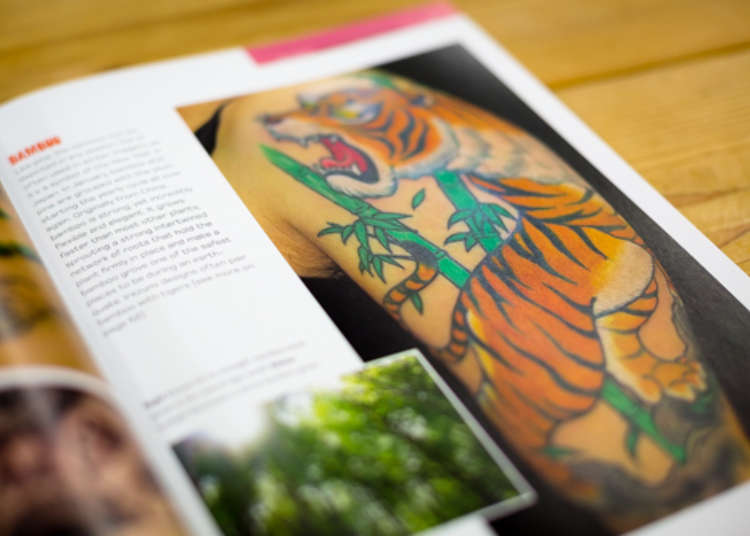
Whether you’re covered in ink, or have never personally considered a tattoo, Japanese Tattoos is interesting enough to appeal to a wide range of readers for a variety of reasons. The book is clear enough for a tattoo novice to understand, while still featuring enough in-depth and exclusive material that even seasoned tattoo enthusiasts will surely learn something new. The images alone are worth a look, but it’s really the information inside that will keep readers glued to the pages.
About the Authors:
Brian Ashcraft is the senior contributing editor for the video-game website Kotaku, and a former contributing editor for Wired magazine. Japanese Tattoos is his third book, following Arcade Mania! and Japanese Schoolgirl Confidential. He has lived in Osaka for over a decade, and his writing has been featured in various publications both in Japan, and overseas.
Hori Benny has lived in Japan since 2002, after growing up in Minnesota. He soon became a tattoo apprentice at Chopstick Tattoo in Osaka, and eventually opened his own studio, Invasion, where he does custom work in various genres.
Related Articles
*Prices and options mentioned are subject to change.
*Unless stated otherwise, all prices include tax.
Popular Tours & Activitiess
Recommended places for you
-

Ueno Zoo (Ueno Zoological Gardens)
Zoos, Aquariums & Botanical Gardens
Ueno
-

Ameyoko Shopping Street
Old Towns (Shitamachi)
Ueno
-

TOKYO SKYTREE®
Landmarks
Ryogoku / TOKYO SKYTREE(R)
-
Events

Tokyo Tower
Landmarks
Roppongi
-

The Imperial Palace
Other Architecture
Tokyo Station
-

Tsukiji Outer Market
Old Towns (Shitamachi)
Tsukiji
-

2025 Autumn Colors Report: Kurobe Gorge Nearing Peak
by: Timothy Sullivan
-

LaLaport TOKYO-BAY North Building Now Open: Shop, Dine & Enjoy Events at LaLa arena, Just 2 Stops from Disney
by: Wemmy Chau
-

Get Ready to Catch 'Em All! First Ever Permanent Outdoor Pokémon Park Opening Near Tokyo!
-

Black Friday 2025: These Are THE Japan Travel & Shopping Deals to Check Out
-

[Extended Offer!](12% OFF KKday Coupon) Mt. Fuji Autumn Leaves, Powder Snow & More! 15 Best Tours to Experience Japan in Fall & Winter
-

New Seibu L00 Series Launching in 2026! What to See Along the Tokyo-Area Golden Route
by: Guest Contributor
Inspiration for Accommodations
-

Enjoy Mt. Fuji from the Comfort of Your Room! Recommended Ryokan with Mt. Fuji View
-

Stay Near the Cherry Blossoms! Hotels for Cherry Blossom Viewing in Tokyo
-

Family-Friendly Hotels with Free Shuttle to Disneyland: Convenient Access for a Magical Stay
-

Top Ranked Hakone Hotels with Mt. Fuji View: Enjoy Stunning Scenery from Your Private Space
-

Convenient Tokyo Hotels with Airport Shuttle: Ideal for Families and Heavy Luggage
-

Stunning Tokyo Tower View Hotels: Enjoy Spectacular Scenery from Your Private Space
-

Convenient Asakusa Hotels with Kitchens: Ideal for Extended Family Visits
-

Experience Luxury: Hakone's 10 Best Five-Star Accommodations
-

Enjoy Mt. Fuji Autumn Leaves! Top Hotels Near the Popular Autumn Leaves Corridor
-

Experience Hakone Fall Foliage from Your Room with Stunning Views
-

The past and present of Ikebukuro
-

Essential Tokyo: The Complete Guide to Ikebukuro Station
-

Dining in Shibuya (Tokyo): Best Restaurants for Yakiniku, Sushi, Cafes & More
by: Tiffany YU
-

Exploring Tokyo: 4 Must-Visit Spots around Tokyo Station
-

LIVE JAPAN Awards 2017 – Meet the Most Popular Spots and Shops among International Tourists to Tokyo!
-

6 Surprisingly Cheap Things in Japan
- #best ramen tokyo
- #what to buy in ameyoko
- #what to bring to japan
- #new years in tokyo
- #best izakaya shinjuku
- #things to do tokyo
- #japanese nail trends
- #what to do in odaiba
- #onsen tattoo friendly tokyo
- #daiso
- #best sushi ginza
- #japanese convenience store snacks
- #best yakiniku shibuya
- #japanese fashion culture
- #best japanese soft drinks












